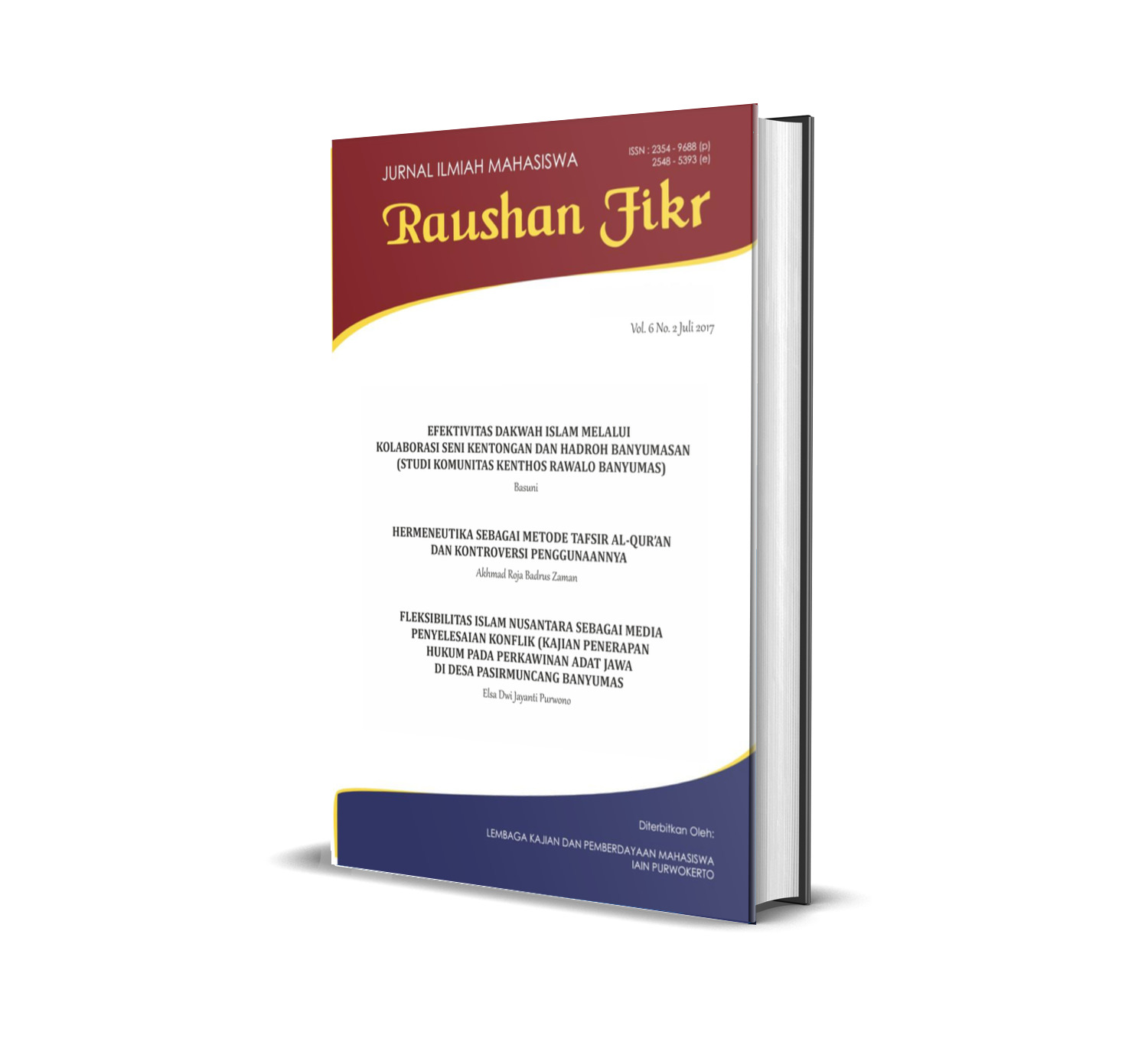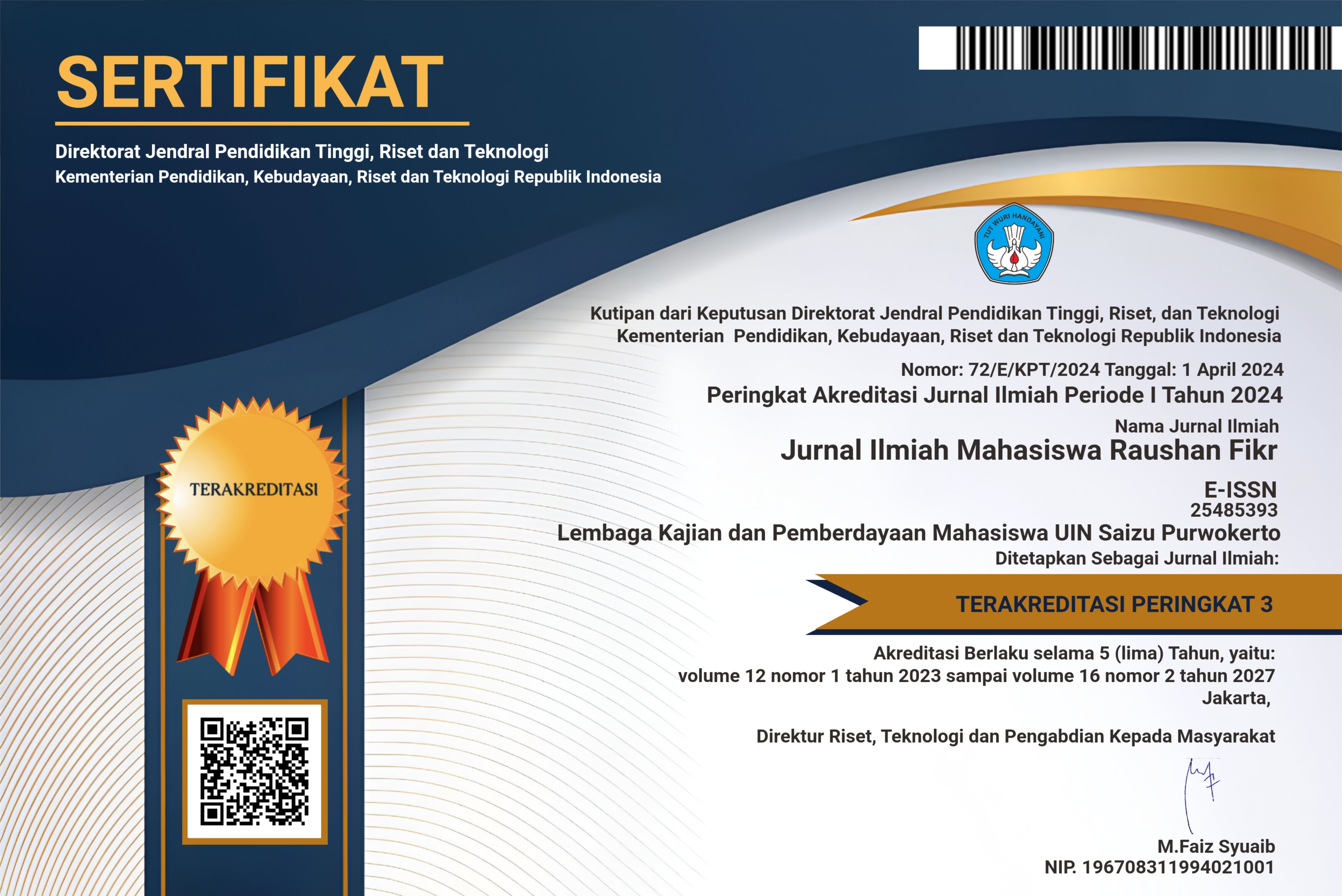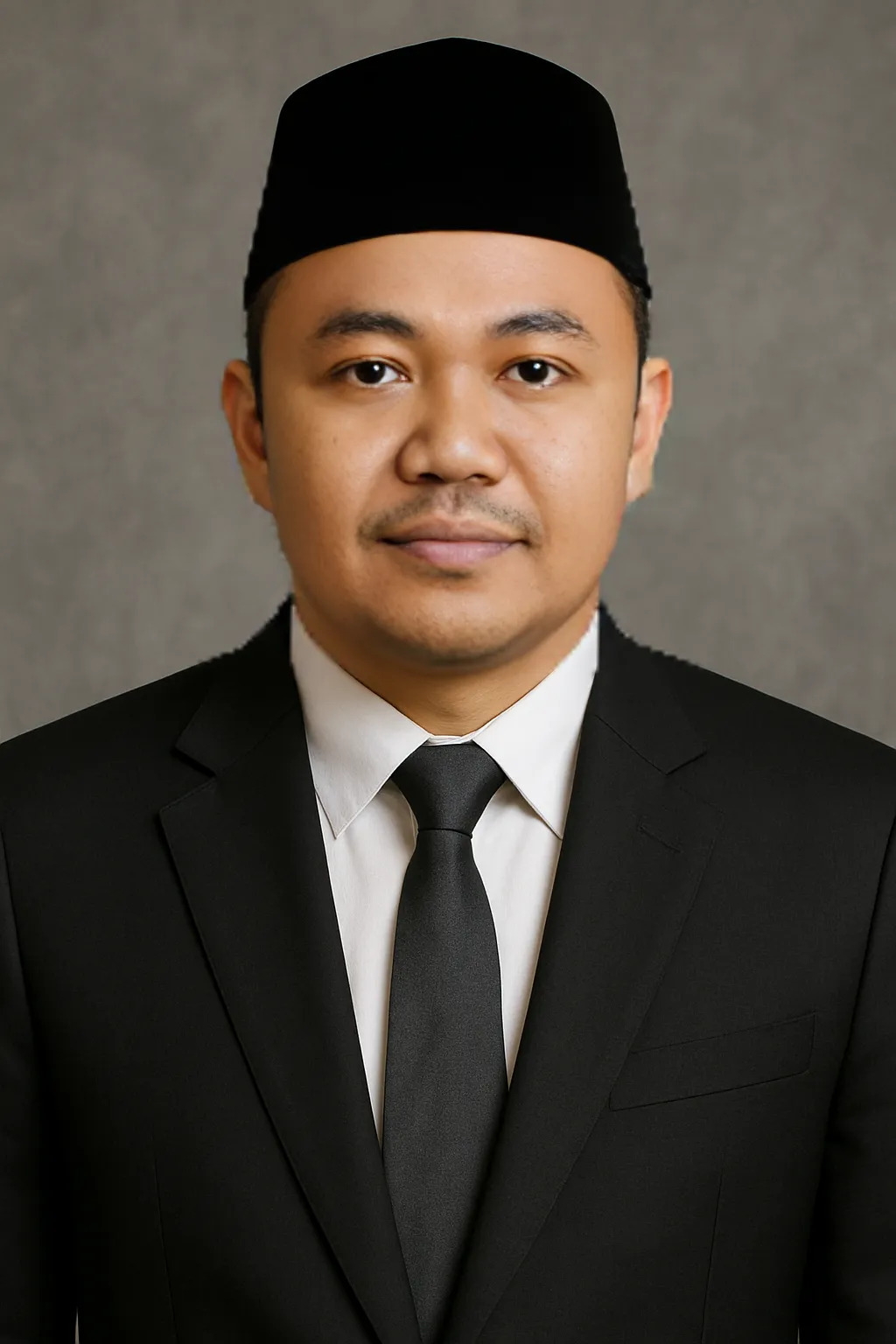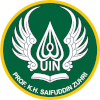EFEKTIVITAS DAKWAH ISLAM MELALUI KOLABORASI SENI KENTONGAN DAN HADROH BANYUMASAN (Studi Komunitas Kenthosh, Rawalo - Banyumas)
DOI:
https://doi.org/10.24090/jimrf.v6i2.2738Keywords:
Culture, Kentongan, Hadroh, Da’wah.Abstract
The purpose of this paper is to study the art of culture Banyumas oriented to the wider community by bringing up simple traditional musical instruments that have value and high quality. The combination of a musical instrument with other musical instruments make a variety of rhythmic harmonization. It is able to make art Kenthongan and Hadroh Bersholawat (Kenthosh) synergize each other. In this modern era the fastest thing faded eroded is a culture. Both culturally in terms of ethics, morals, social relations or art that is summed up in a tradition. Therefore, the reason the author chose the theme of culture as a means of Islamic propaganda is relevant because it is known that religion and culture is one element in the unity of complementary and memeiliki chemistry. Religion without culture is a void, and vice versa. The diversity and characteristic of a region is seen in the surrounding natural and human resources. This is what makes the collaboration between art Kenthongan and Hadroh Bersholawat (Kenthos) popular around the community and broad. Therefore, the author tries to interpret a student’s achievements as well as students in developing the science of lectures that have been in its presence to the surrounding community through kentongan and hadroh bersholawat in Islamic dakwah.Downloads
References
Bahar Adhi Nugraha, Ketua Komunitas Kentongan Tagaluh Kemranjen-Banyumas, Mahasiswa semester IV, Pengembangan Masyarakat Islam, Dakwah, IAIN Purwokerto.
Anwar Maulidin, Vokalis Hadroh Pondok Pesantren Darul Abror Watumas Purwanegara Purwokerto Utara, Mahasiswa semester IV, Pendidikan Bahasa Arab, IAIN Purwokerto.
Enjang Burhanudin Y., M.Pd. Dosen Fakultas Tarbiyah dan Ilmu Keguruan, IAIN Purwokerto.
Paursen Van. Strategi Kebudayaan. Yogyakarta: Kanisius. 1998.
Bachtiar Wardi. Metodologi Penelitian Ilmu Dakwah. Jakarta: Logos, 1997.
Ranjabar Jacobus. Sistem Budaya indonesia – Suatu pengantar. Bandung: Alfabeta. 2013.
Rakhmat Jalaluddin. Rekayasa Sosial (Reformasi, Revolusi, atau Manusia Besar?). Bandung: Remaja Rosdakarya Offset. Cetakan ke III 2005.
Tiranton Teguh.Identitas Wong Banyumas. Yogyakarta: Graha Ilmu. 2013.
Tumanggor Rusmin. Ilmu Sosial dan Budaya Dasar. Jakarta: Kencana. 2010.
Prasetya Joko Tri, dkk. Ilmu Budaya Dasar. Jakarta: PT RINEKA CIPTA. 2004.
Muhamad Najib, dkk. Demokrasi dalam Prespektif Budaya Nusantara. Yogyakarta: LKPSM. 1996.
Gustave E. Von Grunebaum (Ed). Islam Kesatuan dan Keragaman. Terj. Effendi N. Yahya. Jakarta: Yayasan Obor Indonesia, 1983.
Saefullaoh Aris.Gus Dur VS Amin Rais : Dakwah Kultural-Struktural. Yogyakarta: laelathinkers. 2003.
https://map-bms.wikipedia.org/wiki/Kenthongan
http://jualrebana.com/blog/asal-mula-sejarah-hadroh/
Downloads
Published
How to Cite
Issue
Section
License
Authors who publish with this journal agree to the following terms:
- Authors retain copyright and grant the journal right of first publication with the work simultaneously licensed under a Creative Commons Attribution-NonCommercial-ShareAlike 4.0 International License that allows others to share the work with an acknowledgement of the work's authorship and initial publication in this journal.
- Authors are able to enter into separate, additional contractual arrangements for the non-exclusive distribution of the journal's published version of the work (e.g., post it to an institutional repository or publish it in a book), with an acknowledgement of its initial publication in this journal.
- Authors are permitted and encouraged to post their work online (e.g., in institutional repositories or on their website) prior to and during the submission process, as it can lead to productive exchanges, as well as earlier and greater citation of published work (See The Effect of Open Access).
















